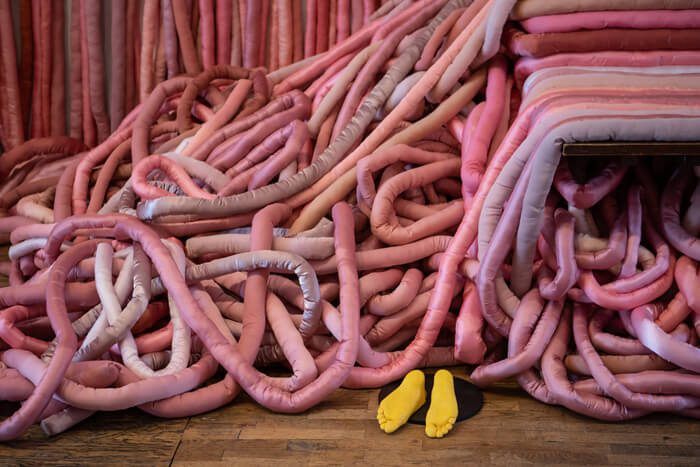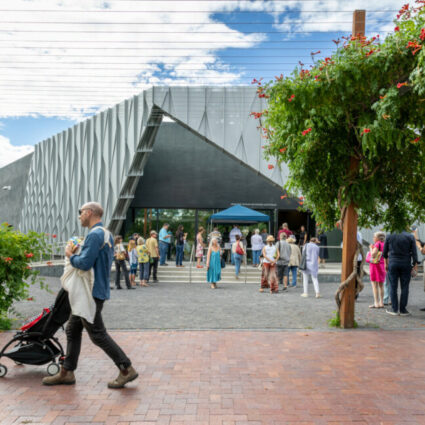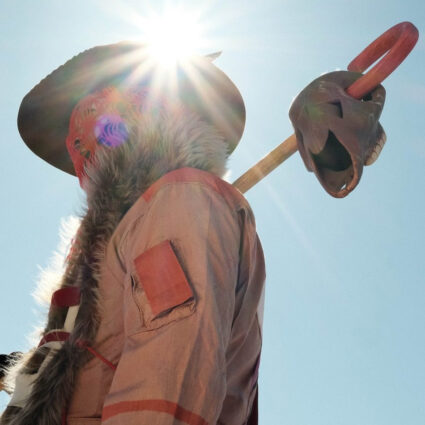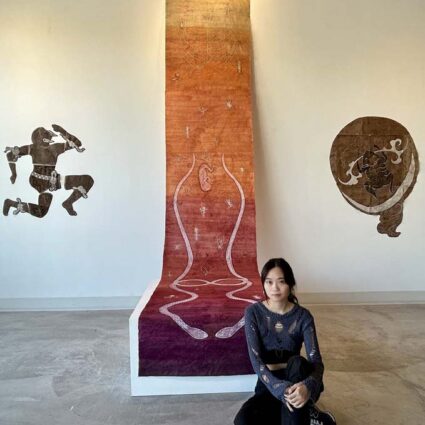Laura Shill’s Future Self Storage at Denver’s Leon Gallery features 9,000 feet of pink and red tubes that combine humor with heartache and the sensual.
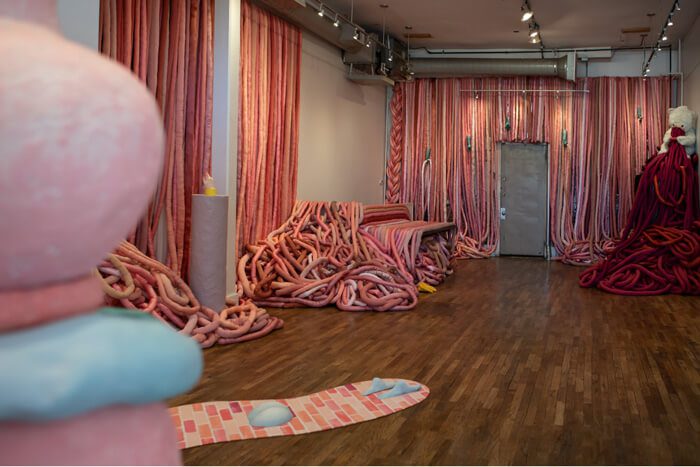
Laura Shill: Future Self Storage
May 8-June 19, 2021
Leon Gallery, Denver
“Repetition,” Eva Hesse said in a 1970 interview, “does enlarge or increase or exaggerate an idea or purpose in a statement.” Specifically, Hesse was referring to “the total absurdity of life,” which became increasingly evident to her as she battled brain cancer—a battle which, sadly, she lost later that year. Indeed, through repetition of form, she sought to augment the fundamentally preposterous nature of our reality.
When viewing Laura Shill’s Future Self Storage, currently showing at Leon Gallery in Denver, Hesse’s sentiments regarding repetition and absurdity are on full display. Shill, a Denver-based artist whose work has shown at the Venice Biennale, the Museum of Contemporary Art Denver, and the Galleries of Contemporary Art at the University of Colorado Colorado Springs, incorporates a variety of free-standing, floor-bound, and wall-hanging sculptural objects into her show. She created most of these artworks from plaster, latex, acrylic, and occasionally clay; all of them combine humor with heartache and the sensual.
But the approximately 9,000 feet of pink and red tubes that bedeck the gallery space (constructed of fabric, polyfill, and, according to the exhibition catalogue, “emotional weight,”) occupy the central focus of Future Self Storage.
En masse, these fabric tubes produce an intestinal effect, offering viewers an up-close, visual, and tactile display of the gallery’s imaginary digestive system. The bounteous, pink tubing overwhelms those who enter the space and necessarily calls attention to the time it must have taken to construct so many of these objects, as well as their long-term storage requirements.
To this extent, one might be compelled to ask: why allot so much time, effort, money, and space into something as absurd as 9,000 feet of pink fabric tubing? (There is, in fact, an excess of 18,000 feet of tubing in total; but Shill chose to leave half of it in storage.)
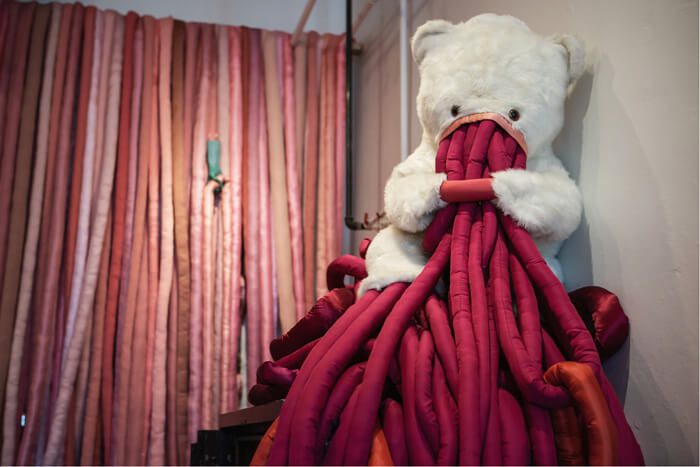
To answer this question, returning to Eva Hesse proves instructive. In Lucy Lippard’s biography of the artist, she mentions that Hesse “compared her love of absurdity to Waiting for Godot,” insofar as Hesse understood that Vladimir and Estragon, the play’s protagonists, “are doing nothing and yet they go on living… and it really is the key to understanding me… my humor comes from there.”
Of course, that nothing, strictly speaking, isn’t “nothing.” Throughout the play, Vladimir and Estragon banter, joke, muse, desire, dream, clown, fail at suicide attempts, eat carrots, receive blows, fall down, and, well, wait. “Nothing” is, in actuality, the sum total of all our actions in the face of our inevitable ends. “Nothing” is what we choose to occupy ourselves as we stand “astride of the grave” and wait to descend “down in the hole.”
This sentiment, though, is not nihilism; rather, it is a call to action. As each of us speeds toward our individual demise, and our species races toward self-annihilation, we must choose our own absurdity, repeat it, enlarge it, and revel in it.
And this, I believe, is a helpful way to consider Shill’s Future Self Storage. After 2020’s turmoil and the realization that our apocalypse is much closer than we thought, it would be easy to panic and resort to the comforts demagogues, religious fanaticism, or fatalism provide us. But Shill’s Future Self Storage reminds us that affirming the absurdity of life—in this case through a repetitive art process—offers us viable and creative alternatives while waiting for the end.
